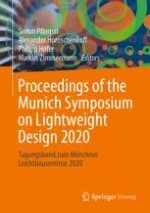Every year, the Technical University of Munich, the Bundeswehr University, and the University of Applied Sciences in Munich invite researchers and practitioners to join the Munich Symposium on Lightweight Design. Experts from industry and academia discuss design tools, applications, and new developments. Topics include, e.g., composite structures, SHM, microstructures, material modelling, design for additive manufacturing, numerical optimization and in particular topology optimization in aerospace, automotive and other industries. The talks are summarized in short articles and presented in this volume.
